
A Blog About Automatic Bollards
A Blog About Automatic Bollards
Introductionc
Urban safety has always been a paramount concern for city planners and residents alike. As cities continue to evolve, so do the challenges associated with managing traffic flow, pedestrian safety, and security. In this ever-changing landscape, innovative solutions are essential to address these challenges effectively. One such solution gaining traction is the introduction of automatic bollards.
Automatic bollards are rising as a versatile and effective tool in urban management, offering solutions for traffic control, security enhancement, and pedestrian safety. This article delves into the concept of automatic bollards, their functionality, benefits, and the impact they can have on urban environments.

Understanding Automatic Bollards
How automatic bollard works
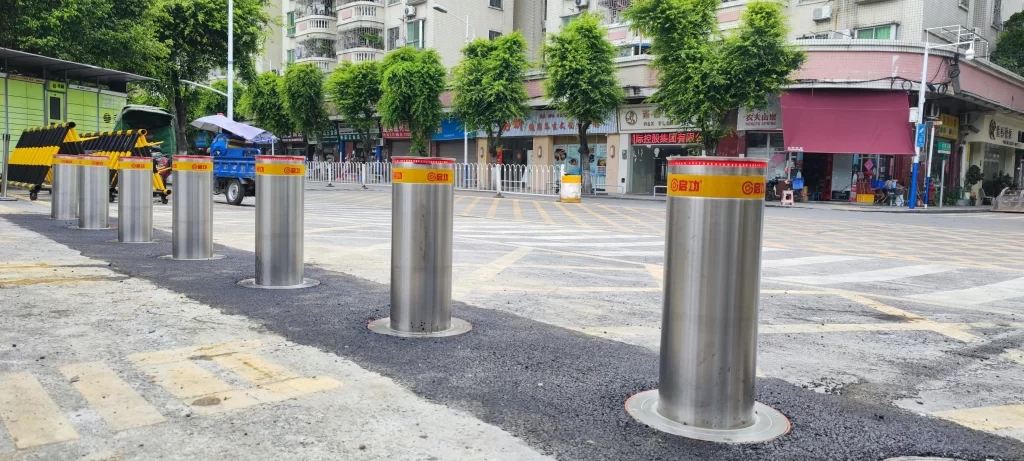
Control Mechanism: Automatic bollards are controlled by a central system that dictates when they should rise or retract. This control mechanism can be operated manually by authorized personnel or automatically triggered by sensors, timers, or remote control systems. Hydraulic Bollards :Many automatic bollards utilize a hydraulic mechanism for operation. A hydraulic pump generates pressure to raise the bollard from its lowered position, while a release valve allows the bollard to retract back into the ground. Hydraulic fluid flows through pipes or hoses to transfer energy and control the movement of the bollard. Pneumatic Bollards:Some automatic bollards rely on pneumatic power for their operation. Compressed air or gas is used to raise the bollard, creating enough force to lift it from the ground. Similar to hydraulic systems, a release valve allows the bollard to descend smoothly back into its housing when retracted. Electric Bollards: Electrically operated automatic bollards utilize motors or actuators to raise and lower the bollard. These systems often incorporate sensors or switches to detect approaching vehicles or pedestrians, triggering the activation of the bollard. Electric bollards may also be connected to a central control panel or network for remote operation and monitoring. Sensors and Detection Systems: Automatic bollards are equipped with sensors and detection systems to detect the presence of vehicles or pedestrians. These sensors may include proximity sensors, infrared sensors, pressure sensors, or loop detectors embedded in the ground. When a vehicle or pedestrian is detected within the predefined range, the sensors signal the control mechanism to activate the bollard. Safety Features: Automatic bollards are designed with safety in mind to prevent accidents or injuries during operation. They may include features such as reflective strips for visibility, warning lights or sounds to alert pedestrians and motorists, and safety barriers or fences to prevent unauthorized access when the bollard is raised. Integration with Urban Systems: In advanced implementations, automatic bollards are integrated with urban systems such as traffic management, surveillance, and emergency response networks. This integration allows for seamless coordination with other control mechanisms and real-time monitoring of traffic conditions and security threats.
Benefits Automatic Bollards
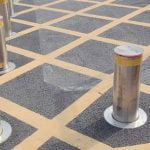

Traffic Management
One of the primary benefits of automatic bollards is their ability to manage traffic effectively. They can control access to certain areas, such as pedestrian zones, bike lanes, or restricted zones, ensuring only authorized vehicles are allowed entry. By regulating traffic flow, they contribute to reducing congestion and improving overall mobility in urban environments.
Security Enhancement
Automatic bollards serve as a crucial security measure, especially in high-risk areas or places vulnerable to vehicle-borne threats. They provide a physical barrier against unauthorized vehicle access, mitigating the risk of ram-raiding, terrorist attacks, or accidental vehicle intrusion into sensitive areas like government buildings, airports, or embassies.
Pedestrian Safety
In busy urban areas, ensuring pedestrian safety is paramount. Automatic bollards can create safe zones by preventing vehicular access to pedestrian-only areas, such as sidewalks, plazas, or outdoor dining spaces. By separating vehicles from pedestrians, they reduce the risk of accidents and enhance the overall pedestrian experience.
Flexibility and Adaptability
Unlike traditional fixed bollards, automatic bollards offer greater flexibility and adaptability to changing circumstances. They can be raised or lowered as needed, allowing temporary closures for events, emergency access for first responders, or seasonal adjustments to traffic patterns. This versatility makes them valuable assets for dynamic urban environments.
Implementation and integration
The successful implementation of automatic bollards requires careful planning, integration, and coordination with existing urban infrastructure and systems. Here are some key considerations:


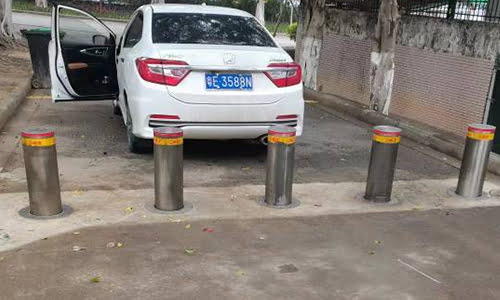
- Site Assessment
Before installation, a thorough site assessment is essential to identify the specific requirements and challenges of the location. Factors such as traffic volume, pedestrian activity, emergency access routes, and aesthetic considerations should be taken into account to determine the optimal placement and configuration of automatic bollards.
- Integration with Urban Systems
Automatic bollards should be integrated with existing urban systems, such as traffic management, surveillance, and emergency response networks. This integration allows for seamless operation, coordination with other control mechanisms, and real-time monitoring of traffic conditions and security threats.
- User Awareness and Education
Public awareness and education are critical to the successful deployment of automatic bollards. Clear signage, communication campaigns, and outreach programs should be implemented to inform residents, motorists, and pedestrians about the purpose, operation, and regulations associated with automatic bollards.
- Maintenance and Monitoring
Regular maintenance and monitoring are essential to ensure the optimal performance and reliability of automatic bollards. Routine inspections, testing of mechanical and electronic components, and prompt repairs are necessary to address any issues and prevent system failures or malfunctions.
Case Studies
Successful Deployments of Automatic Bollards
London,UK
In central London, automatic bollards have been installed to protect pedestrianized areas and heritage sites from unauthorized vehicle access. These bollards are integrated with the city’s traffic management system and activated during specified hours to control vehicular traffic while allowing pedestrian access.
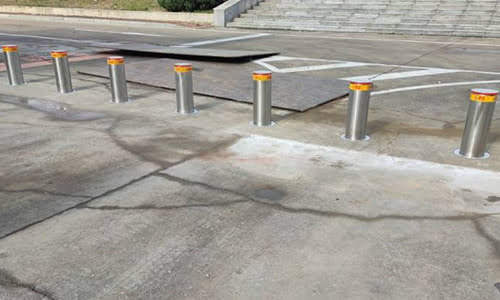
Barcelona,Spain
Barcelona has implemented automatic bollards in various locations, including tourist hotspots and cultural landmarks, to enhance security and pedestrian safety. The bollards are synchronized with the city’s surveillance cameras and can be raised or lowered remotely in response to security threats or special events.

Singapore
Singapore utilizes automatic bollards to regulate access to its restricted zones, such as the Central Business District and government buildings. These bollards are equipped with RFID technology to allow seamless entry for authorized vehicles while preventing unauthorized access and ensuring efficient traffic flow.
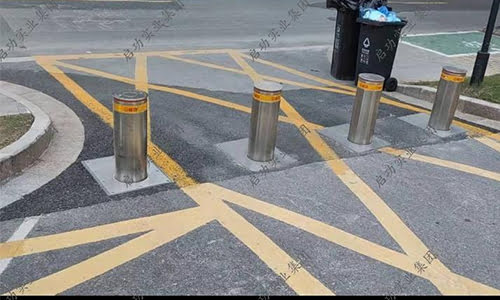
Future Outlook
As urbanization continues to accelerate, the demand for innovative solutions to address urban challenges will only grow. Automatic bollards represent a promising technology with the potential to make cities safer, more efficient, and more resilient. With advancements in automation, sensor technology, and data analytics, the capabilities of automatic bollards will likely expand, further enhancing their effectiveness and versatility in urban management.
Conclusion
Automatic bollards are emerging as a valuable tool for urban safety, offering solutions for traffic management, security enhancement, and pedestrian safety. Through careful planning, integration, and coordination, these bollards can be effectively deployed to address the evolving challenges of urban environments. With ongoing technological advancements and successful implementations worldwide, automatic bollards are poised to play a significant role in shaping the future of urban mobility and security.





